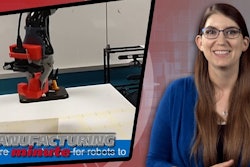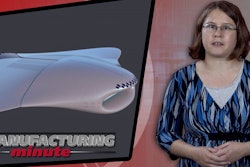The manufacturing industry today is in the midst of a new frontier known as Industry 4.0, otherwise known as the fourth industrial revolution. With Industry 4.0 comes the promise of connected machines through the power of the industrial Internet of Things (IIoT). As water, electricity and the internet changed the manufacturing landscape in years past, the IIoT is having a profound effect on how factory floors operate and how manufacturing firms do business.
One of the most noticeable differences between today’s factory floors and those of yesteryear is the evolution of machines to machine-as-a-service. With IIoT connectivity, machine-as-a-service fulfills the traditional capabilities of a factory floor machine while also contributing to larger business goals. However, machine-as-a-service adoption, often tied to digital transformation, is a bit more involved than just going paperless or connecting devices to the internet. In order to take full advantage of everything machine-as-a-service has to offer, there are a few key steps to take in order to make the most out of Industry 4.0.
Step 1: Digital transformation starts with change management
In order to digitally transform to Industry 4.0, manufacturing firms must have the infrastructure in place to support that change. As mentioned before, digital transformation is not a one-and-done transition to paperless processes or connected machines. Instead, Industry 4.0 requires entirely new business models and strategies. Therefore, manufacturing firms will need to look ahead to determine if they can support the scalability that comes with the machine-as-a-service model. On top of all of this, businesses now need to consider not only the added value to existing processes but also how all of these augmented processes are now connected.
Step 2: Shift from speeds and feeds to outputs and needs
Machine-as-a-service revolves around the end goal: meeting the needs of both company and customer. Traditionally, machines were sold with set speeds and feeds and a ceiling for productivity levels. Machine-as-a-service takes advantage of IIoT connectivity to adopt a more subscription-based model. Regular, new software upgrades expand the capabilities of an existing IIoT-connected machine, prolonging its lifespan, promoting its adaptability and further integrating it into a business-wide ecosystem versus siloed constructions of metal and oil.
Step 3: Brace for the jump to real-time operations
While IIoT connectivity accelerates productivity on the factory floor, it also speeds up everything else. One of the key challenges: service and maintenance. Prior to machine-as-a-service, customer touchpoints were largely limited to the initial installation and routine check-ups. When a machine would malfunction, it could potentially be a while before workers notice. However, thanks to the IIoT, machines-as-a-service will immediately notify workers as and when a part needs maintenance or repair. This puts pressure on service technicians to keep pace with the IIoT, and traditional means are not enough. Businesses are thus tapping other resources — partner networks and/or crowdsourcing – to ensure they have the staff to keep their smart factory up and running.
Step 4: Broaden the definition of the “machine”
Once the aforementioned business philosophies are well established, it’s time to get down to the nuts and bolts of machines-as-a-service. The machine-as-a-service is still a machine, and yet at the same time it is so much more. Through IIoT connectivity, expanded touchpoints and real-time operations, machines-as-a-service extend their reach to business-wide goals. For example, one of the easiest ways to keep a customer happy is to ensure their machines stay up and running by meeting their real-time service needs. After all, happy customers translate to new business and sales.
Machines-as-a-service also fulfill the needs of various business departments in real-time. A legal department can check diagnostics and review service logs to ensure their machines are compliant with the latest industry standards. A finance department can pull production data through the IIoT to conduct cost-benefit analyses. Machines-as-a-service not only run the factory floor but also meet the needs of the entire business, taking full advantage of the connectivity that comes with the IIoT.
Welcome to Industry 4.0!
While digital transformation can seem like an ephemeral project at times, the transition to Industry 4.0 can be as solid as the steel foundation that drives it. It will, however, require an all-hands-on-deck approach, involving your entire business to reap the benefits of an IIoT-connected machine-as-a-service. But with an integrated approach to digitizing the factory floor, manufacturing firms have the means to accelerate operations, expand product offerings and, most importantly, drive business goals by ultimately meeting the needs of their customers.
Manuel Grenacher is CEO of Coresystems.























